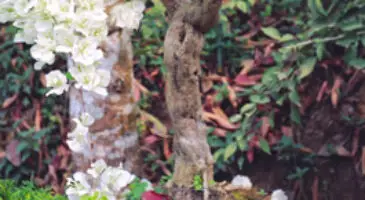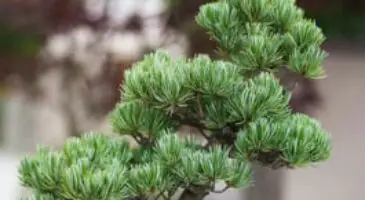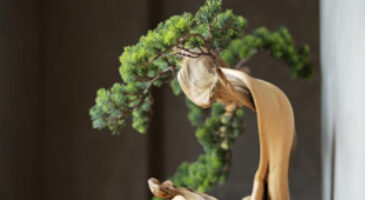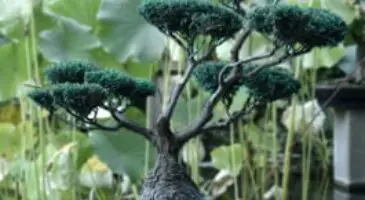Table of Contents
Can you leave bonsai in the rain? If this question has been boggling your mind for a long time, then, make sure to read on to know if rain is good for your bonsai or not.
Bonsai trees and rain
It is not a secret that the right watering practices are important for the overall health of a bonsai tree. Although your bonsai can die if you let the soil to dry out, overwatering has just the same effect.
Since most bonsai trees are often kept outdoors, these can subject them to different local weather conditions, specifically rain that can be very unpredictable.
Since there is no way that you can gauge the amount and frequency of the rain that might or might not fall on your bonsai trees, it is essential that you learn and understand rain and its effects on the bonsai tree. This way, you will be able maintain and observe the right watering practices.
Is rainwater good for bonsai
Every gardener knows the fact that watering in an appropriate amount is one of the basic essentials of bonsai trees.
Where letting the soil dry out completely can ruin the health of bonsai while killing it entirely, providing excessive amounts of water will bring no better results either. As bonsai is usually planted in an outdoor environment where they have to face varying weather conditions and the riskiest is bonsai in the rain.
It is highly important to know the impacts and effects of rainwater on your bonsai tree so that you can take the necessary steps in advance to protect your bonsai. With that being said, you may still have a question in mind: is rainwater good for bonsai?
Well, you will definitely get your answer along with other useful information after reading this guide.
Can you leave bonsai in the rain
Rainwater is not itself harmful to bonsai but the fact of getting too much water for a long time can cause issues in the tree. Gardeners and plants experts claim that heavy rain cannot harm bonsai even if it stays consistent for 10 to 15 days.
Such short-term rains will only harm bonsai if the tree already has weak roots or branches. The Bonsai root system is one of the best and has the ability to withstand short-term heavy rain in an efficient manner. Leaving bonsai in the rain will cause issues if the rain stays still for a very long time or there is always water staying near the tree.
This can keep the soil wet all the time which can easily lead to softening and degrading the health and strength of bonsai roots. If this is the case, there are possibilities that your bonsai may fall off from its root anytime.
What types of water best suitable for bonsai
Any kind of water can be used for bonsai but it should be clearer of any impurities. Experts usually claim that rainwater is probably best suitable for bonsai as there are no harmful chemicals included in it.
Also, rainwater has a composition that can give extra strength while allowing bonsai to speed up its growth and development process. Building up calcium and other minerals inside the bonsai soil and roots can weaken the tree while leading them to even die as well.
This is the reason that rainwater is considered preferred as there is no calcium and minerals in it. As rainwater may not be available to you all the time, simple tap water will also be good for bonsai. Just make sure that bonsai is protected from water coming with impurities.
Should a bonsai tree sit in water for a long time?
Letting a bonsai tree sit in water for a relatively long time is not a good idea at all. Immersion is the process in which a bonsai tree is dipped in a container full of water so that the gardener can check the frequency at which water should be given to bonsai.
The bonsai tree along with its meshed pot is placed in the water and cannot be removed until bubbles stop coming out of it. Sometimes this process is done if bonsai has remained unwatered for a relatively long time and its soil has been dried off completely.
Although this process is extremely beneficial, still gardeners recommend only keeping bonsai in a water container for a maximum of 5 minutes. This thing can give you a clear idea that bonsai should not sit in water for a long time.
Overwatering your bonsai trees and rain
Overwatering on a continual basis may lead to poor development of roots, root rot, and an unhealthy bonsai tree as a whole.
Bonsai soil must be watered thoroughly then allowed to lose moisture little by little until the soil surface is almost dry before watering it thoroughly again. Failure to give the soil this period of time to dry out may lead to soil that is wet all the time and lacks oxygen.
It may also lead to premature collapse of the structure of the soil and the ultimate lose of health of the root system, eventually compromising the health of the tree.
Considering all of these things, what will be the effect of those long periods of continuous rain on the roots of bonsai trees kept outdoors, then?
If rain will continue to pour for more than one to two weeks, the soil won’t have the chance to dry out. As a result, the bonsai will be overwatered that can soon lead to some health issues.
Will rain and overwatering kill your bonsai
Continuous heavy rain for two to three weeks won’t necessarily kill your bonsai tree, except if it already has unhealthy, damaged, or weak root system because of getting overwatered by hand for an extended period of time or is in an extremely water compacted or retentive soil.
A bonsai won’t get damaged after short periods of overwatering. Chronic watering is what can really pose danger to the health of even the most vigorous bonsai tree even if it only happens for a few weeks. Healthy bonsai trees have stronger and more vigorous roots enough to ensure shorter periods of excessive watering.
If the continuous rain doesn’t let the soil dry out for extended time period or your chosen organic soil doesn’t drain fast enough, you might want to shelter your bonsai trees under other bigger bonsai trees, against the side of the outbuildings, or landscape trees. You can also try tipping the pots to one side that will allow faster draining through any of the drainage holes at the pot’s either ends.
Take note that there are bonsai pots with drainage holes only found at the center of the base. The effect will be reversed if you tip this kind of pots and may leave the roots sitting in pools of water that are trapped at the pot’s base.
How to know if you are overwatering a bonsai tree
It is more than important for the bonsai soil to have space so that it can dry off to some extent before getting the next watering round. Watering bonsai when you can see or feel the water on bonsai soil can be referred to as overwatering. You should water bonsai and let the moisture dry off from the soil before watering it again.
Where watering a lot is beneficial for many plants, bonsai requires an appropriate amount, and exceeding that limit can make it weak and eventually kill it as well. This factor is also implemented at the time of immersion as keeping bonsai in the water container for a long time can ruin it right away without you knowing.
Underwatering your bonsai trees
The amount of water that the soil surface has collected during periods of rainfall is usually not enough to seep into the upper levels of soil. This amount is relatively small compared to the water amount that is received when a watering can or hose has been specifically trained on the bonsai tree.
Failure to water the soil, especially during summer months, just because the surface of the soil is wet following a period of rain may lead to disastrous results when in fact, the soil’s main body is dry.
Unless there is a particularly heavy rainfall and you can tell that the soil mass has been completely saturated, you still need to water the soil after rainfall. You have to remember that any period of time where you let the soil dry out may seriously damage or kill a bonsai tree. Intermittent or short bouts of overwatering won’t cause any damage.
How to know if you are underwatering a bonsai tree
The best sign of knowing that you are underwatering bonsai will be its appearance and freshness. You can get an idea during the time of immersion because if the soil is releasing too many bubbles for a long period of time, it is a clear sign that soil has a dryness to a great extent and you are underwatering the plant.
If this happens, the best solution is to increase the frequency of water and again verify it with the immersion process after a specific period. Do keep this fact in mind that not watering bonsai adequately will directly absorb its freshness, bring some huge harm to it, and will slowly lead bonsai to get killed eventually.
How long can a bonsai tree grow without any water
The answer to this question may vary depending on various factors such as weather conditions, temperature, soil, etc. In a general view, it can be said that a bonsai tree can live and grow without any water until you miss various cycles of watering it.
In some areas, it is recommended to only water bonsai once a week while other areas require watering on a daily basis because of their temperature.
The basic fact is that bonsai’s soil should not remain dry for a very long time. It is highly essential to keep moisture in the soil even if it is in a minimum amount. On average, it is said by various experts that the bonsai tree may stop drawing or may even start showing the decay signs within a month or less, if not provided water.
Bonsai soil and rain
If you are using an inorganic soil mix with no compost or peat, it is somewhat difficult to end up overwatering your bonsai tree at all. It is one of the best reasons why you should avoid the use of organic soil materials that tend to break down faster through overwatering by hand and heavy rain.
Inorganic bonsai soils that can retain enough water for supporting the tree but allows instant damage of excess moisture can greatly lower the risks of overwatering.
Watering your bonsai trees
It is not really easy to say the exact amount of water and watering frequency that a bonsai tree will need because of different humidity, weather conditions, type of soil mixture, and pot size. But, it is important to remember that so far, watering your bonsai tree is the most important factor when it comes to caring for them and ensuring their overall health. There are a lot of bonsai trees that end up dying because of incorrect watering compared to the rest of the causes combined.
The general rule of thumb here is that you should check your tree daily to make sure that its soil is moist enough.
Watering should be done only in the evening. This will ensure that your bonsai tree won’t experience any shock from dramatic changes in the temperature of the soil if it becomes a bit dry.
You should never allow the soil to dry out completely and avoid watering on a routine when your collection is made up of several trees. You need to water each tree separately to avoid overwatering. With time, when you become more experienced with caring for your plants, there will be no longer a need for you to feel the soil just to test for moisture.
Enough experience will allow you to tell by simply looking at the soil. In general, the tree will noticeably require watering about every one or two days. But, if your tree is placed outdoors and your area has warm weather, watering may be necessary several times a day.
Is sunlight essential for bonsai trees
Bonsai trees require sunlight just like they cannot live without water. No matter what you place bonsai inside or outside of your house, it should be given proper time under the direct sunlight for better growth and strength of the tree.
According to the bonsai experts, it should be given at least 5 hours of sunlight on a regular basis. Some people also suggest placing your bonsai in an outdoor area during the hot summer days of May to July. Do keep the fact in mind that providing more sunlight to bonsai will require an extra amount of water as the soil will dry off very quickly.
Can bonsai survive or grow in cold temperatures
Surviving in cold temperatures is more than difficult as the buds will tend to die easily. It can be said that bonsai is a species that loves to survive and grow under normal weather conditions and they are not meant to perform adequately in extreme temperatures.
Experts suggest either keeping bonsai inside the house or installing some equipment that can create a greenhouse effect so that bonsai can have the warmth required for its survival. Some species of bonsai are capable of growing in winter where the temperature remains around 25 degrees celsius.
More resources:



